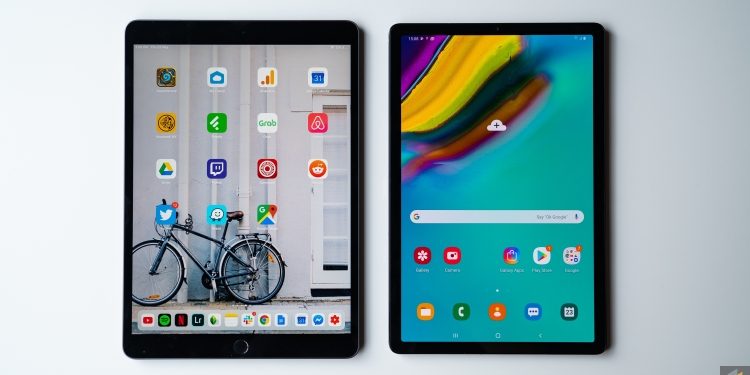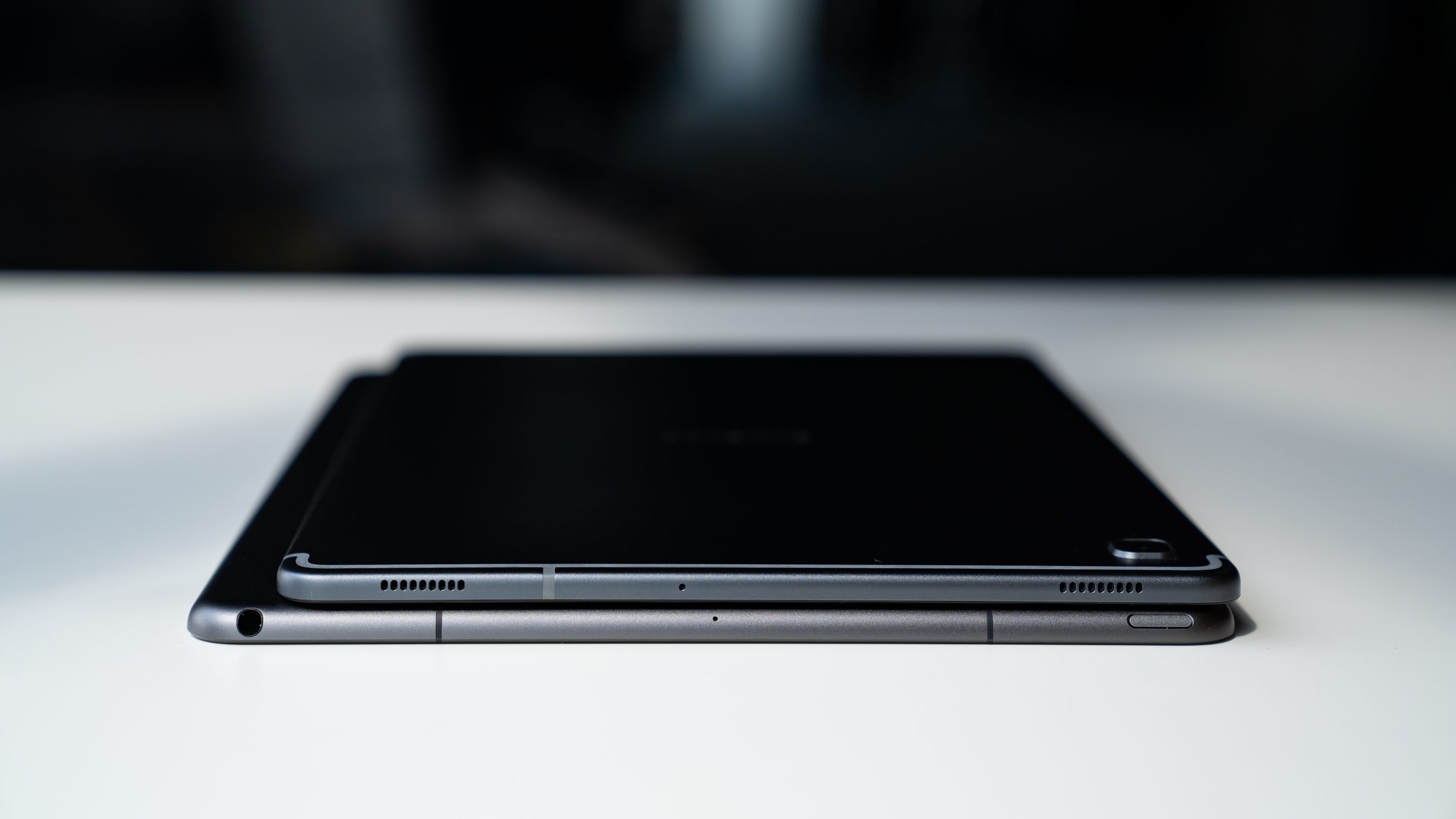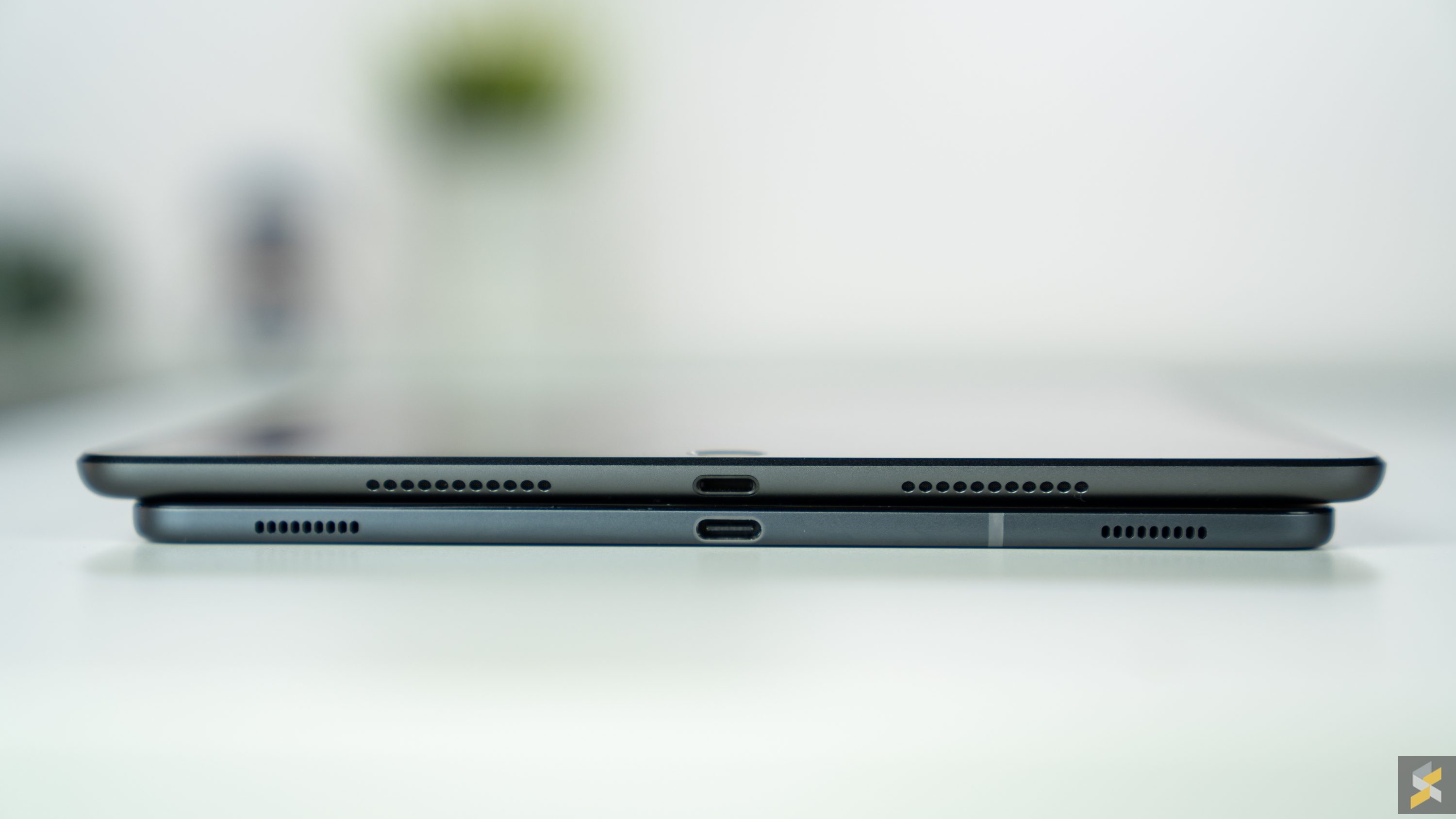For as long as I can remember, Apple has always been king of the tablet market. And, obviously, when I say tablet market, I don’t include full Windows devices like Microsoft’s Surface line of products because I consider those detachable laptops. When I say tablet, I mean stuff like the Samsung Galaxy Tab, Google Pixel C, and of course the legendary iPad.
In fact, iPad has become so ubiquitous that it’s basically the Jacuzzi or Maggi of mobile tablets. More people probably understand what “iPad” means as opposed to “tablet”.
Still, this market domination has not stopped Apple’s competition from pumping out Android tablet after Android tablet. But, the question is: Are they any good? Well, to find out, I decided to take a look at one of the newest Android tablets to launch–Samsung’s Galaxy Tab S5e–and pit it against what has been my favourite iPad of 2019 so far, the iPad Air 2019.
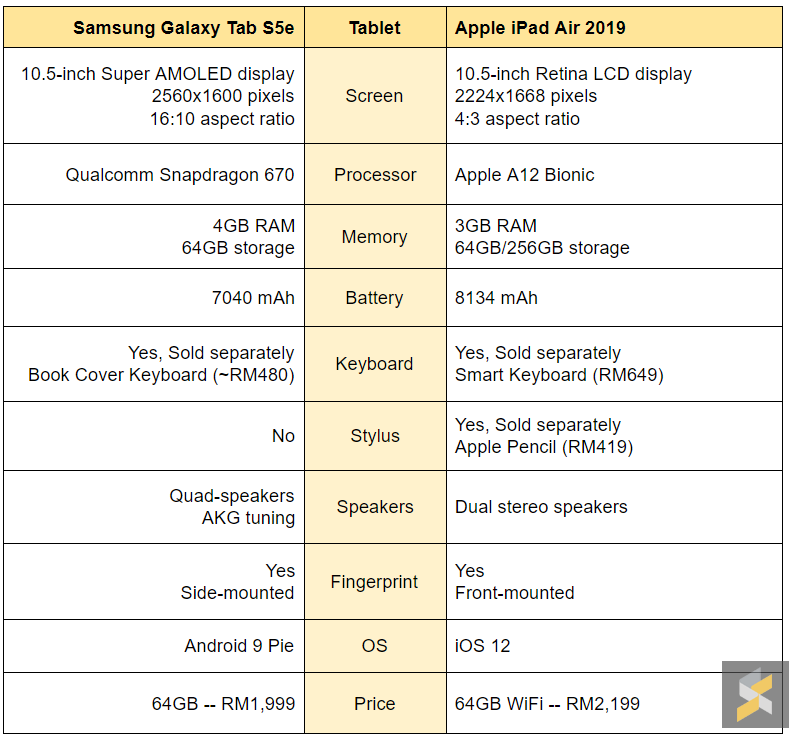
On paper, these devices definitely seem to stack up very well to one another. They’ve got similar prices for equivalent memory configurations, similar builds, similar footprints–the list goes on and on. But, in the day or so that I spent with the Samsung Galaxy Tab S5e, I have to say that they give very different experiences.
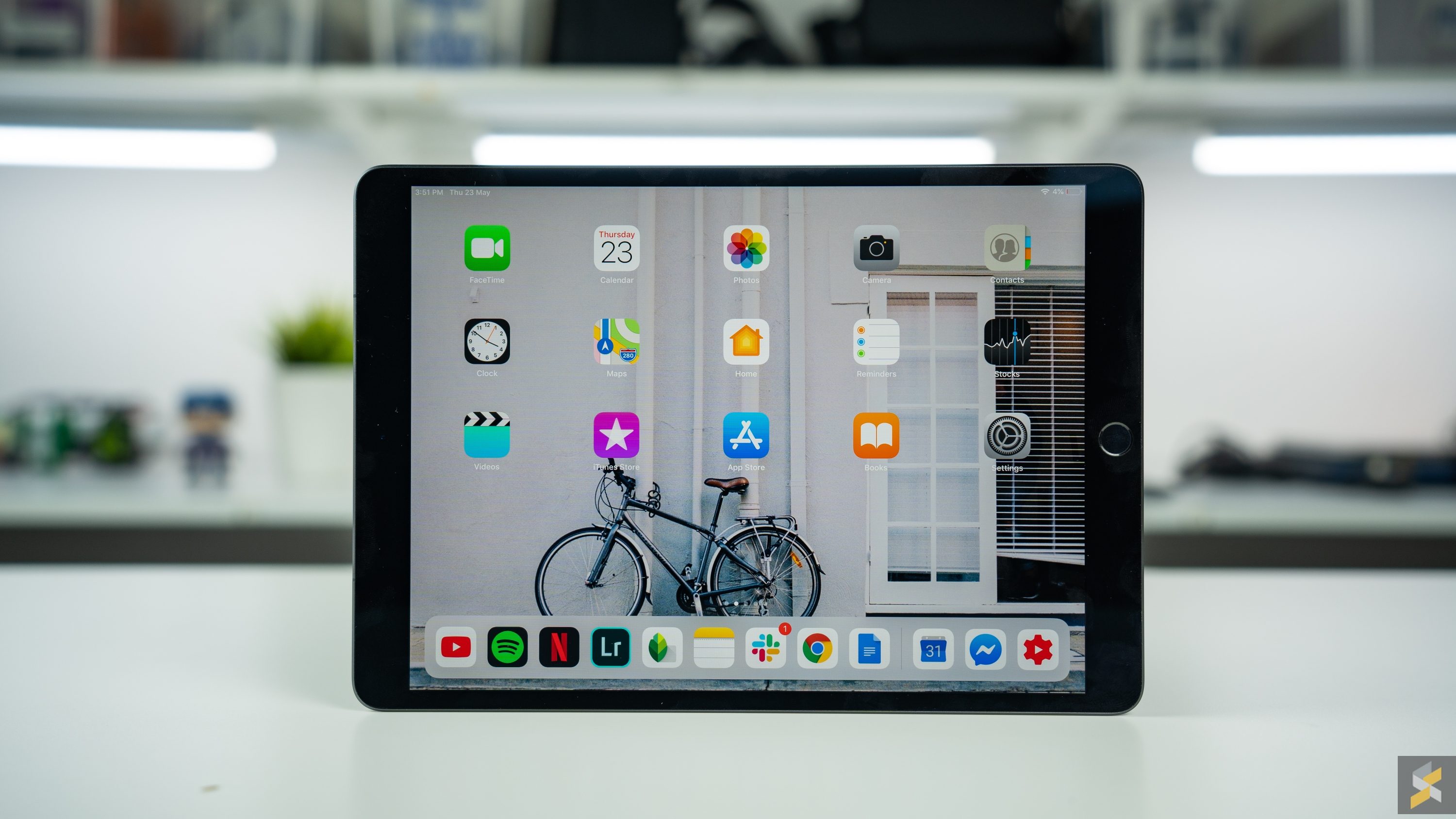
Some context: I’ve been using the iPad Air 2019 for some time now, and paired with the Smart Keyboard, it has basically replaced my Windows laptop for 80% of my work needs. I only ever use my Windows laptop for batch image processing and transfer, as well as light video editing. Outside of trade-show events (think MWC19/Computex), I often offload my video/image processing jobs to my video team so I spend most of my time writing and doing research–both of which are things the iPad Air can do as well as any Windows device.
Plus, its a lot more portable than my laptop, and has a much better battery life so it just made sense for me to use it. That said, my favourite upside for writing on the iPad Air is how devoid of distraction it is. Because I can’t have multiple desktops up, it’s harder to get distracted from my work so it allows me to be a lot more productive in the day. I do wish it had a better keyboard feel, but besides that I can basically get through most of my workdays with just the iPad.
So, I do have quite a lot of experience with using the iPad, but I believe that there are still a whole host of additional features I haven’t discovered yet so you shouldn’t take my word as the gospel truth; I’m no iPad “expert”.
With that out of the way, let’s get back to the comparison because I was very, very interested to see how the variation in direction Samsung took with the design of their tablet would affect user experience. Let’s start with:

Productivity
To me, this is the most important thing a tablet has to nail. Above all, it has to allow me to be more productive on it than I can be on my smartphone. Otherwise, the tablet becomes far less practical in my eyes.
As a result, having support for a proper keyboard is paramount, and both the Tab S5e and the iPad Air do–which is great. The iPad Air supports the infamous Smart Keyboard and all of its quirks, while the Tab S5e has something called the Book Cover Keyboard. Now, Samsung didn’t send me a Book Cover Keyboard to check out with the Tab S5e, so I can’t really comment on that, but let me just say that the bar to clear to be better than the Smart Keyboard is not very high.
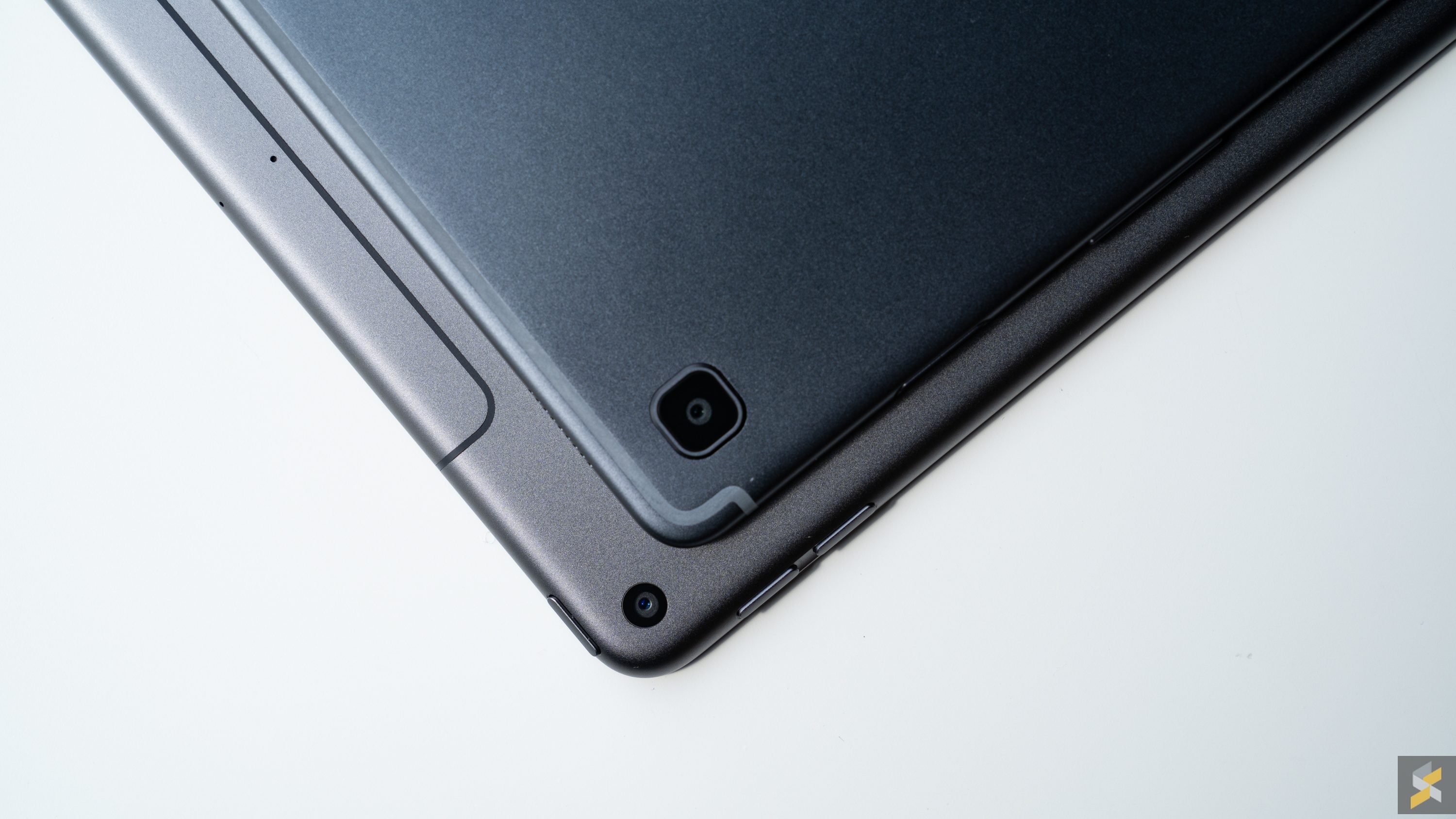
Apple’s keyboard has a ridiculous folding mechanism that is as awkward to unfold as it is to fold. It also doesn’t provide any protection (you have to get an iPad Pro + Smart Keyboard Folio for that), and comes off way too easily. The keys aren’t backlit, and they have a terribly mushy feel with very shallow key travel.
That said, while I wasn’t able to test the Tab S5e’s keyboard–and I’m not a particularly big fan of the Smart Keyboard–the most important thing that’ll determine whether you’re productive on the tablet or not is in the software. And in this regard, iPad Air 2019 blows the Tab S5e out of the water thanks to one simple feature: The dock.
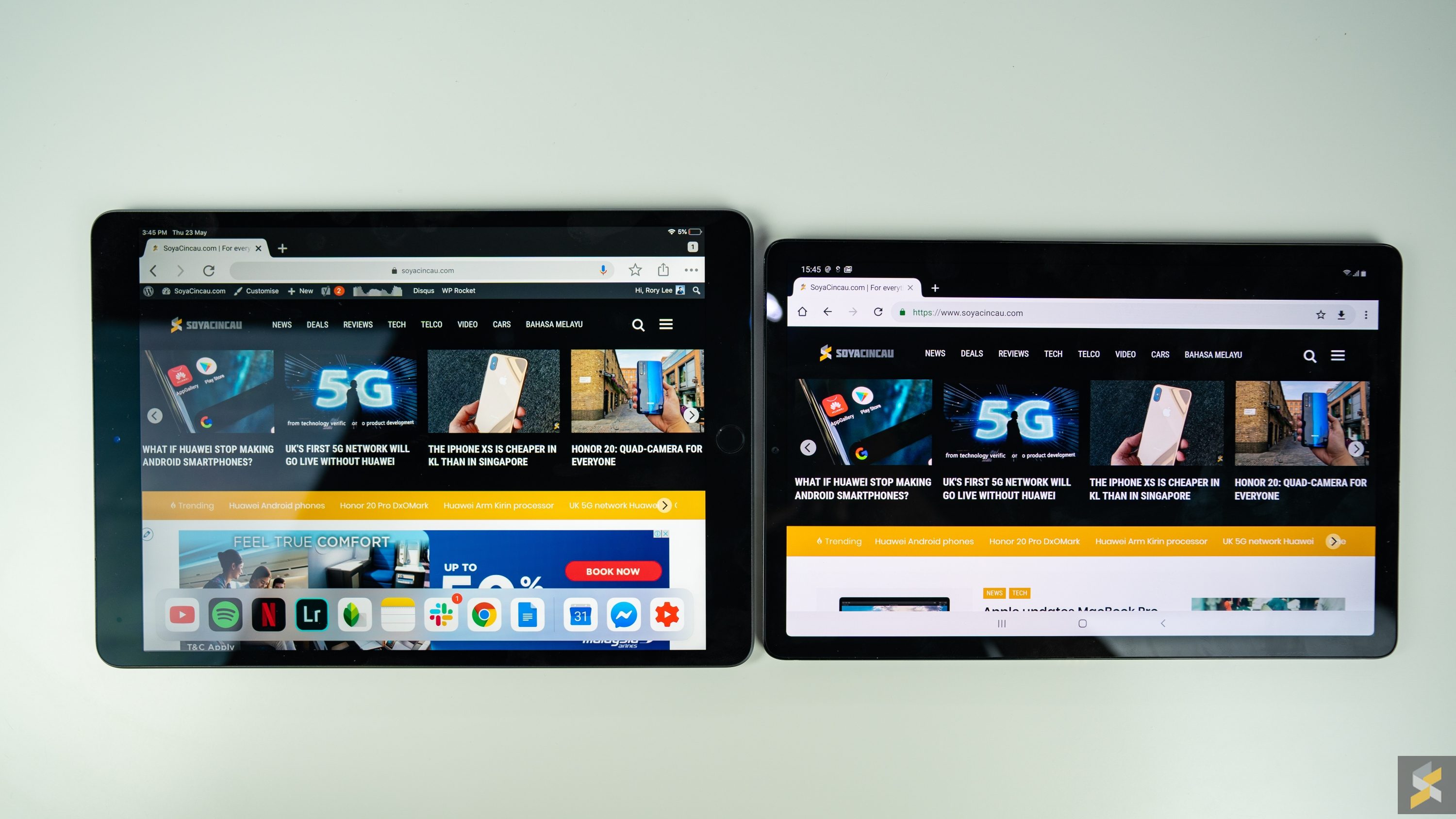
Yes, the Tab S5e can do multitasking, it can access the tablet version of YouTube, and it can also give you a desktop-class browsing experience with Chrome just like the iPad, but not having the dock just kills productivity. I didn’t realise how useful it was to have that there until I lost the ability to use it on the Tab S5e.
The effortlessness of launching multi-windows, switching between apps, and launching your favourite apps–all with a simple half swipe up is just something I wasn’t able to replicate on the Android tablet OS. The Galaxy Tab S5e just felt too much like a slightly bigger version of my phone compared to the iPad Air’s proper tablet OS optimisation. It almost felt like it wasn’t even a fair fight.
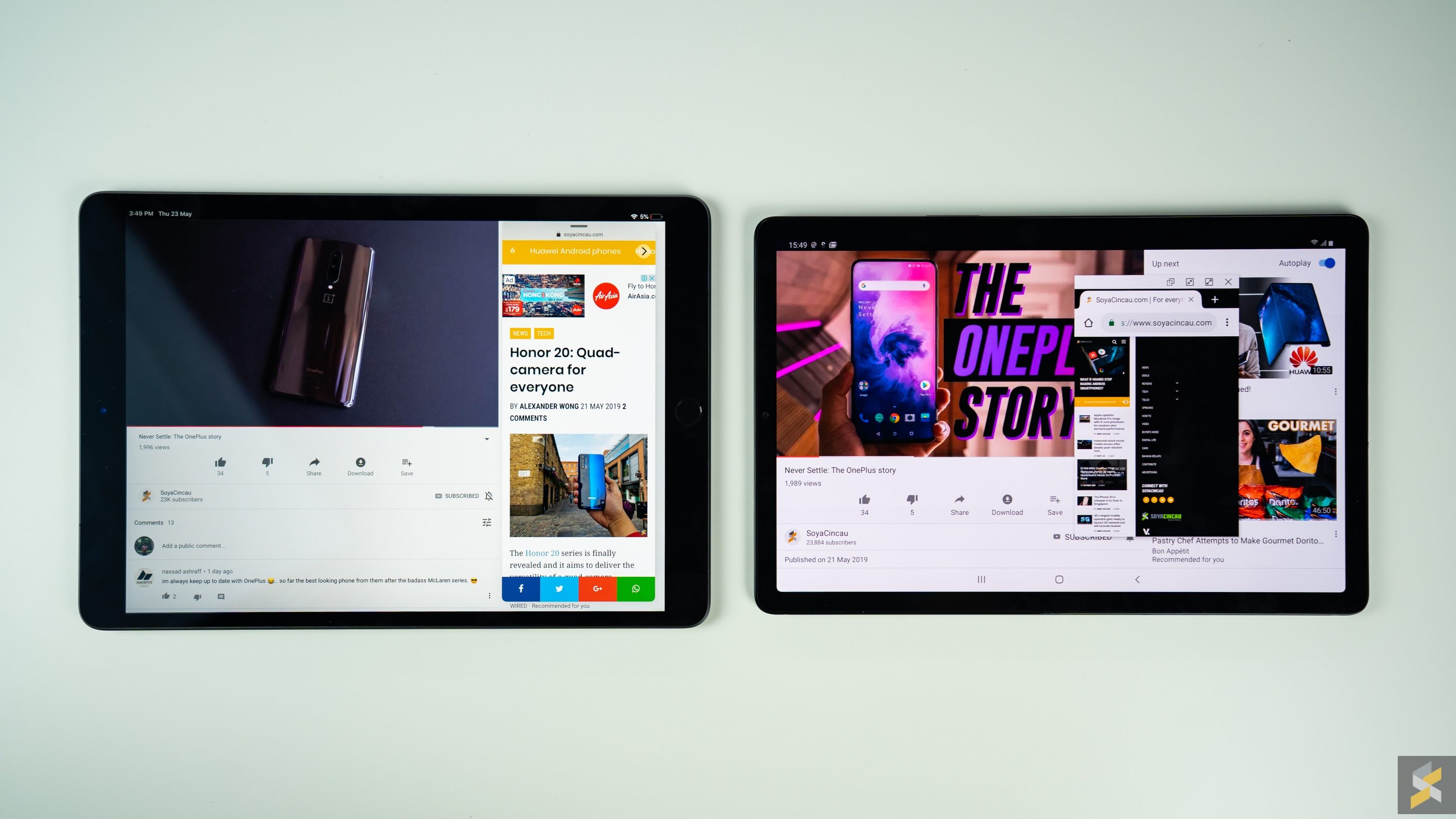
And, to make matters worse, Apple’s adding even more useful features to iOS for the iPad–or iPadOS–with the next update that’ll probably push iPad’s functionality even further ahead of its competition. So, if productivity is important to you on a mobile tablet, then I really can’t recommend the Tab S5e over the iPad Air.
However, if your desires are more rooted in entertainment and content consumption, the Tab S5e may just be the better choice.
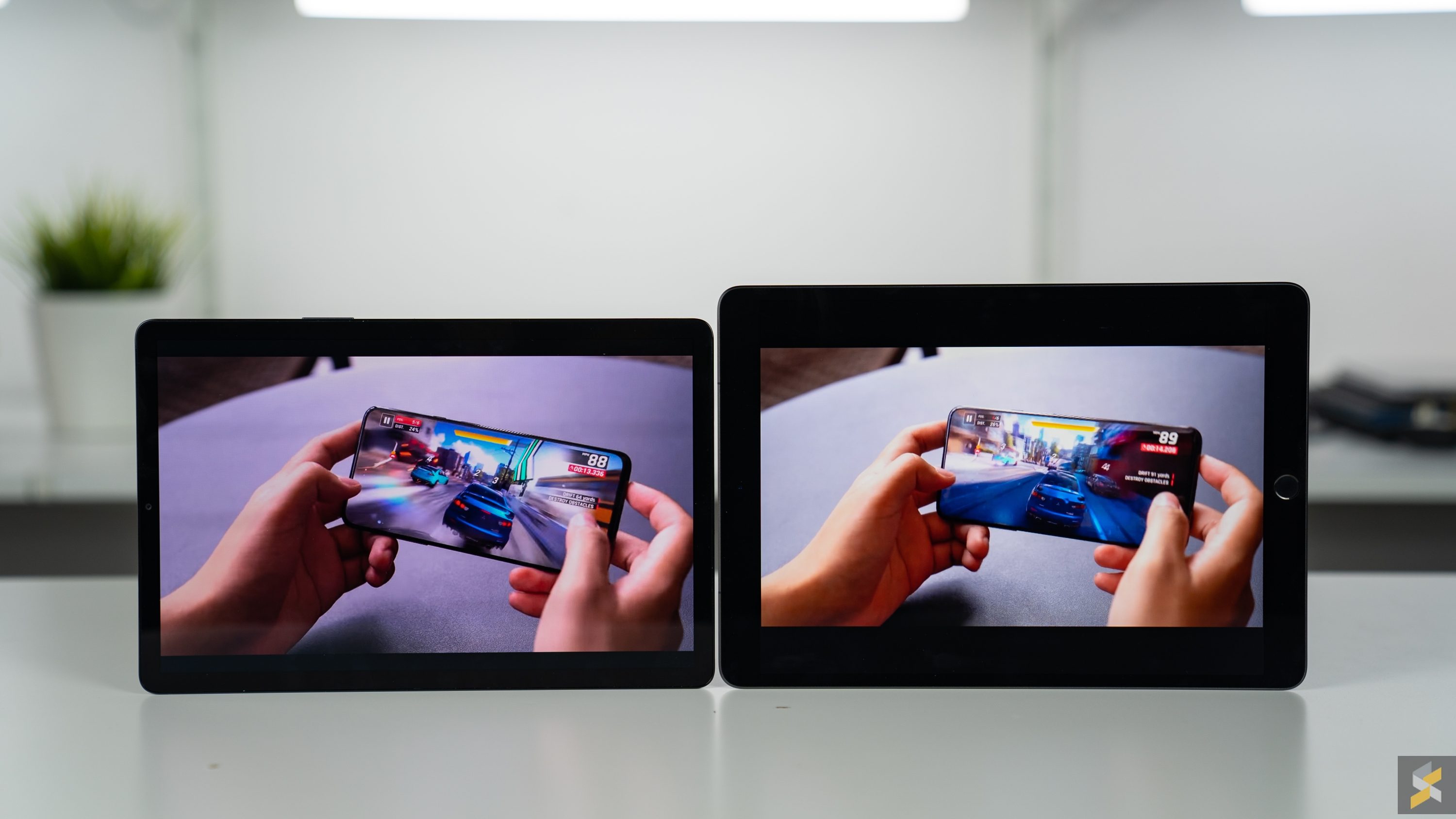
Content consumption
Don’t get me wrong, the iPad Air has a great 10.5″ Retina Display pushing 2224×1668 pixels. Plus, it features a much better set of stereo speakers than the basic iPad while also lacking the ridiculous air gap between the display and the protective glass on top. So, it’s a far better content consumption device compared to the basic iPad.
However, the Galaxy Tab S5e just feels better tuned for video consumption than the iPad Air. For example, the iPad Air’s stereo speakers are both on the bottom of the iPad, so if you watch stuff in landscape, audio only really comes out from one side. Then, there’s the 4:3 aspect ratio that the iPad Air’s screen is configured in, meaning you get huge black bars on the bottom and top of the display no matter what content you consume.
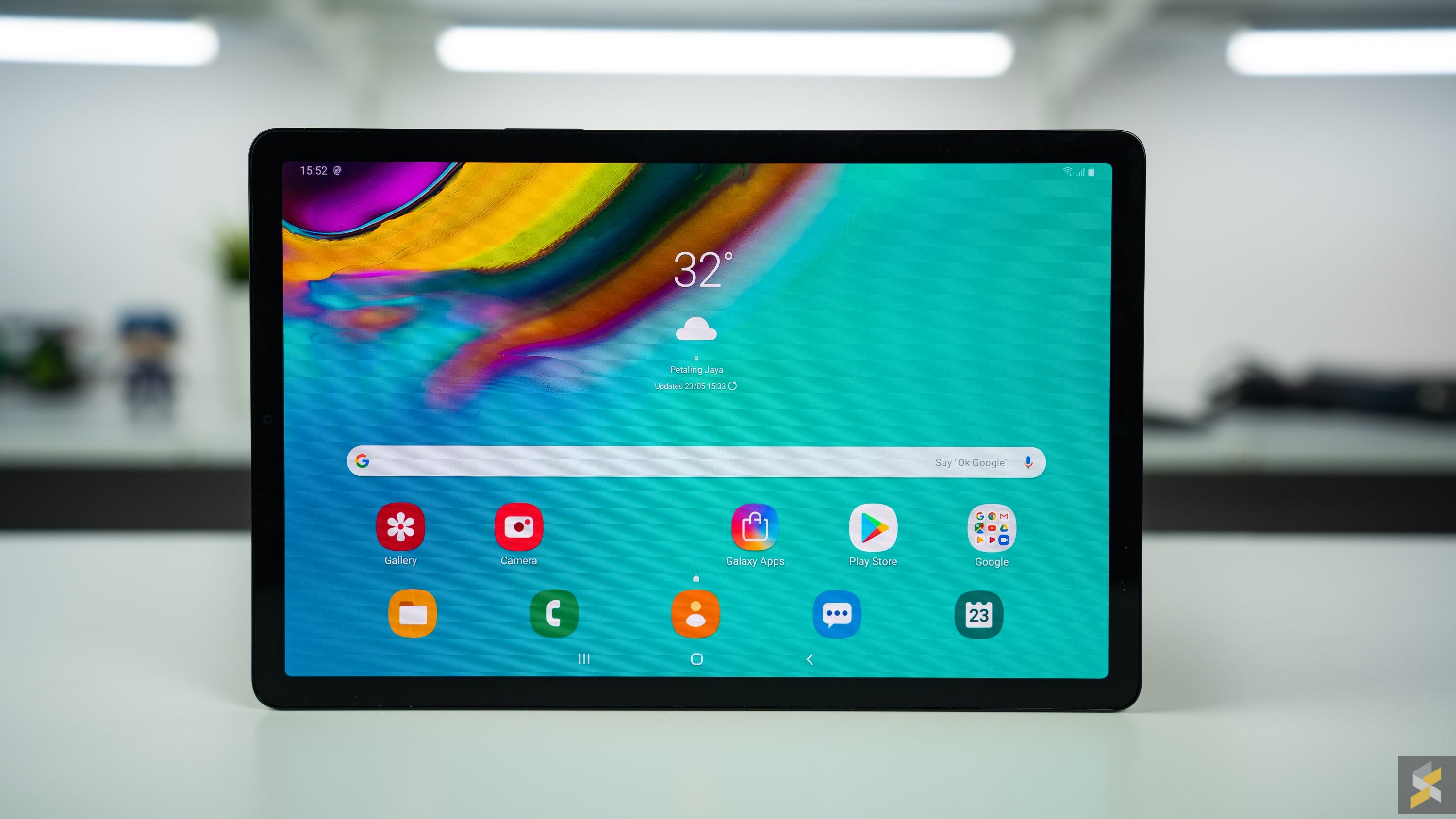
Over on the Tab S5e, however, you get a much wider 16:10 aspect ratio which is a lot more suitable for video consumption as most content is 16:9 or wider. Its also got a great Super AMOLED display that pushes a 2560×1600 pixel WQXGA resolution across 10.5 inches. What’s more, the device has a significantly slimmer chin and forehead so you get a more immersive viewing experience overall.
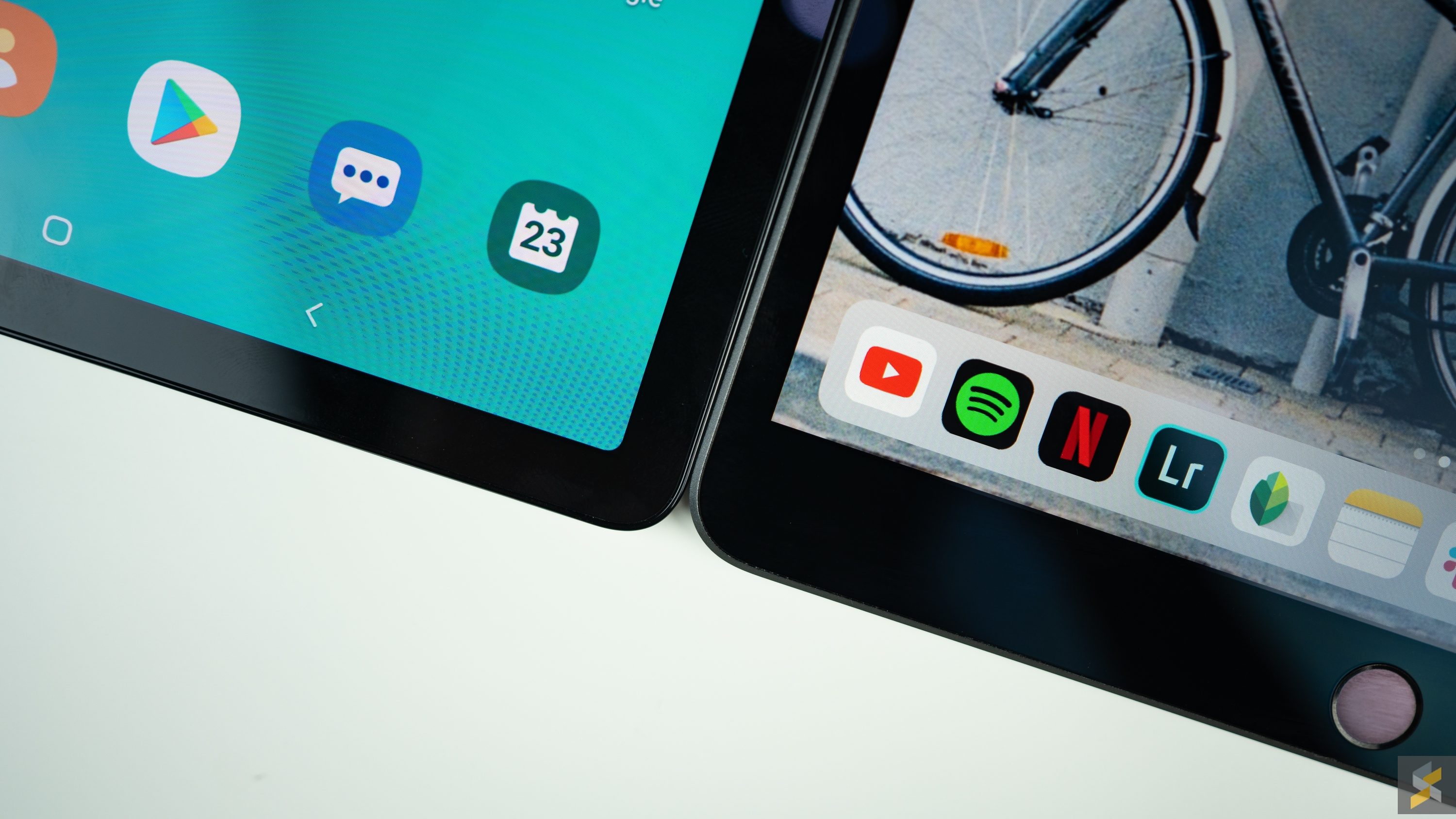
That said, the biggest edge the Tab S5e has over the iPad Air is that Samsung’s equipped their tablet with quad speakers tuned by AKG, and they make a pretty big difference. You get a fuller sound, more volume and just a more enjoyable video watching experience than the iPad Air.
However, Samsung shot themselves in the foot when they didn’t include a 3.5mm headphone jack on their media-centric tablet. I love that it charges via USB-C instead, but why on earth does it not have a 3.5mm headphone jack? It’s not like their tablet is significantly slimmer than the iPad Air 2019 either–as far as I can tell they’re practically the same thickness. So, what gives?
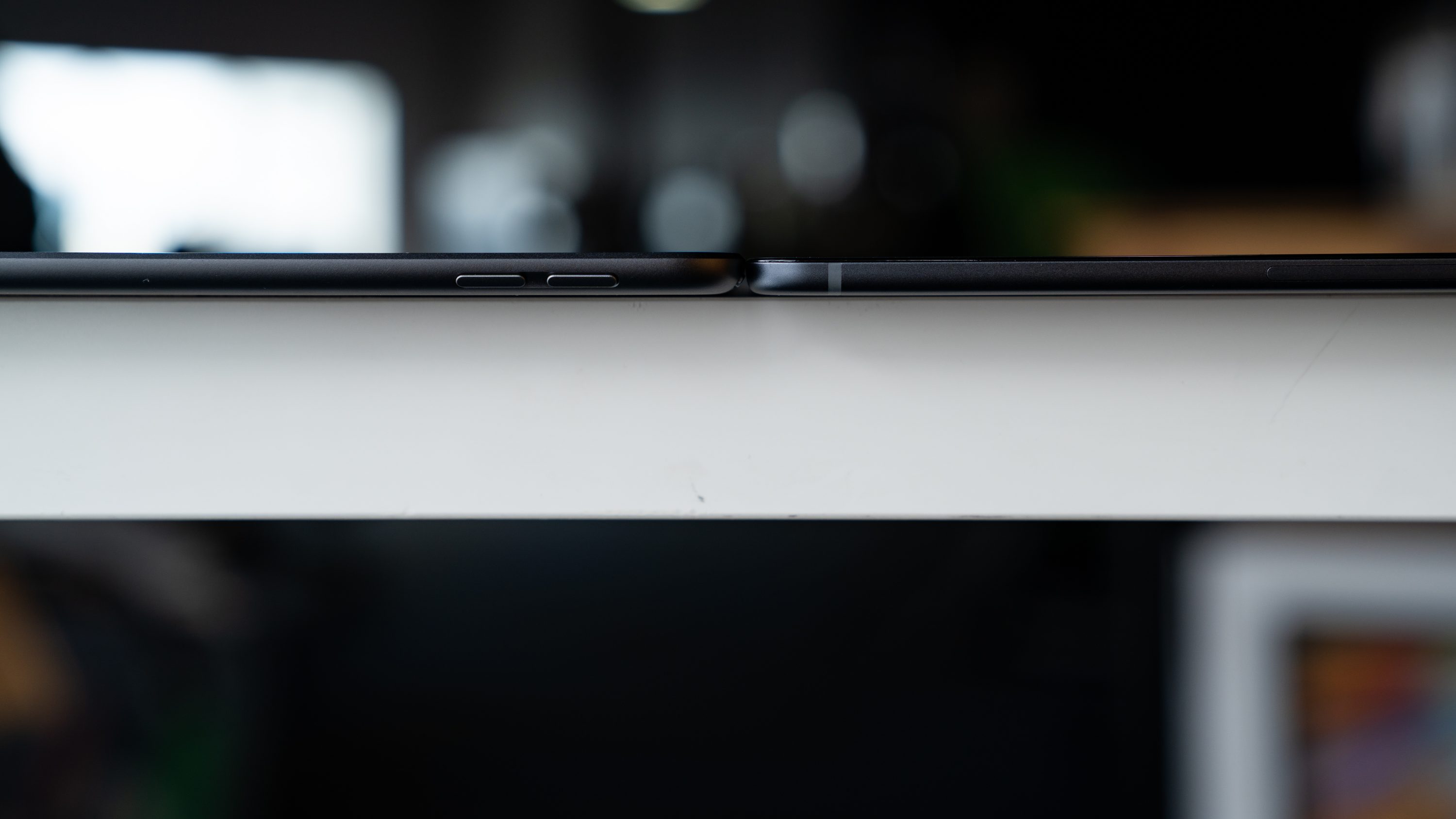
What a missed opportunity this was for them to absolutely dominate the iPad Air in one aspect. Because for me personally, I would prefer 3.5mm headphone jack over quad speakers simply because I watch content on my iPad in public more often than not.
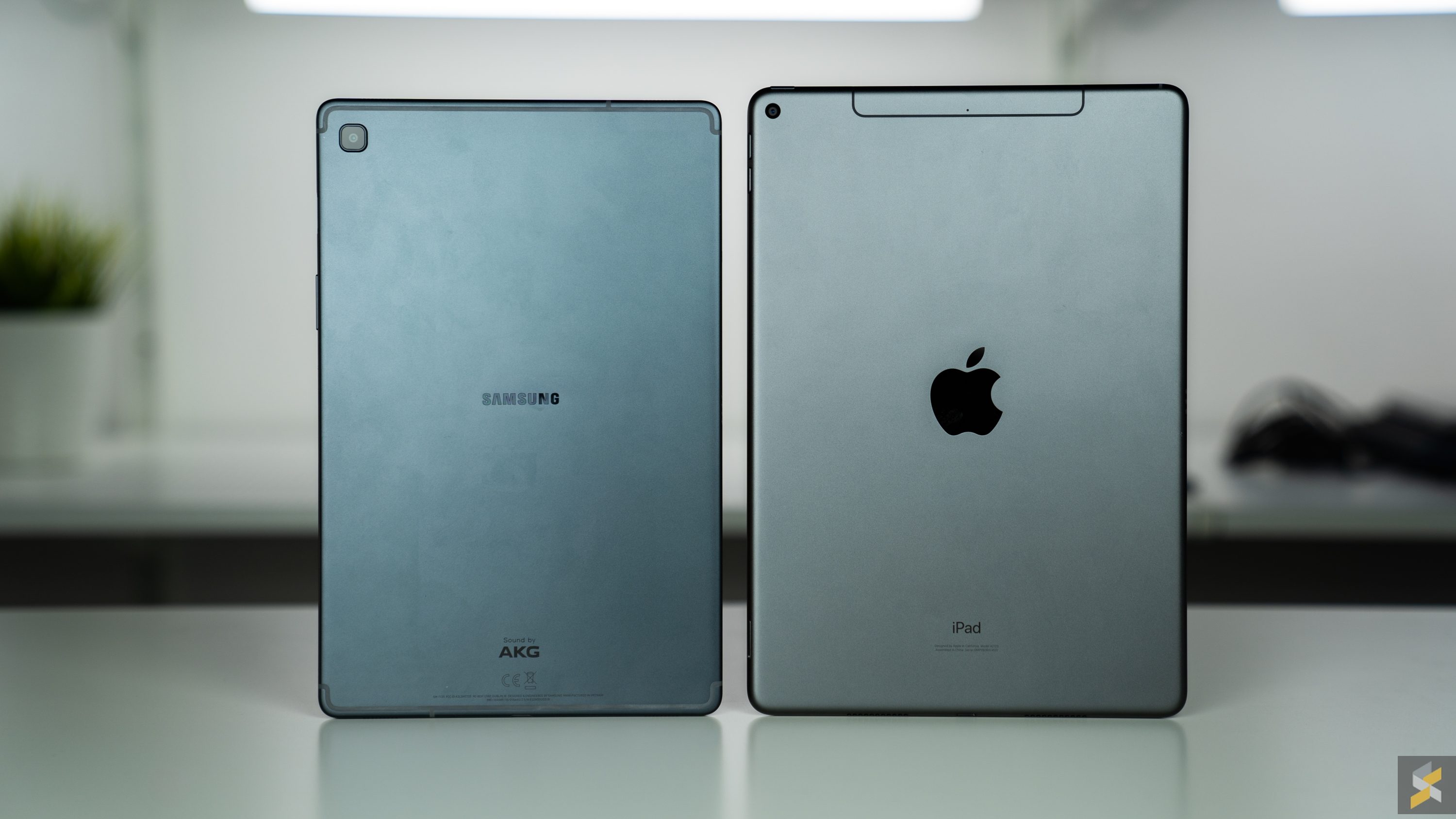
Then, we’ve got performance
Apple’s iPad Air 2019 comes back swinging when you take a peek under the hood. While the Galaxy Tab S5e comes with an upper-midrange Snapdragon 670 SoC, the iPad Air packs Apple’s flagship A12 Bionic processor. The iPad Air just feels smoother than the Tab S5e, but it’s hard to say if that’s purely due to the processor.
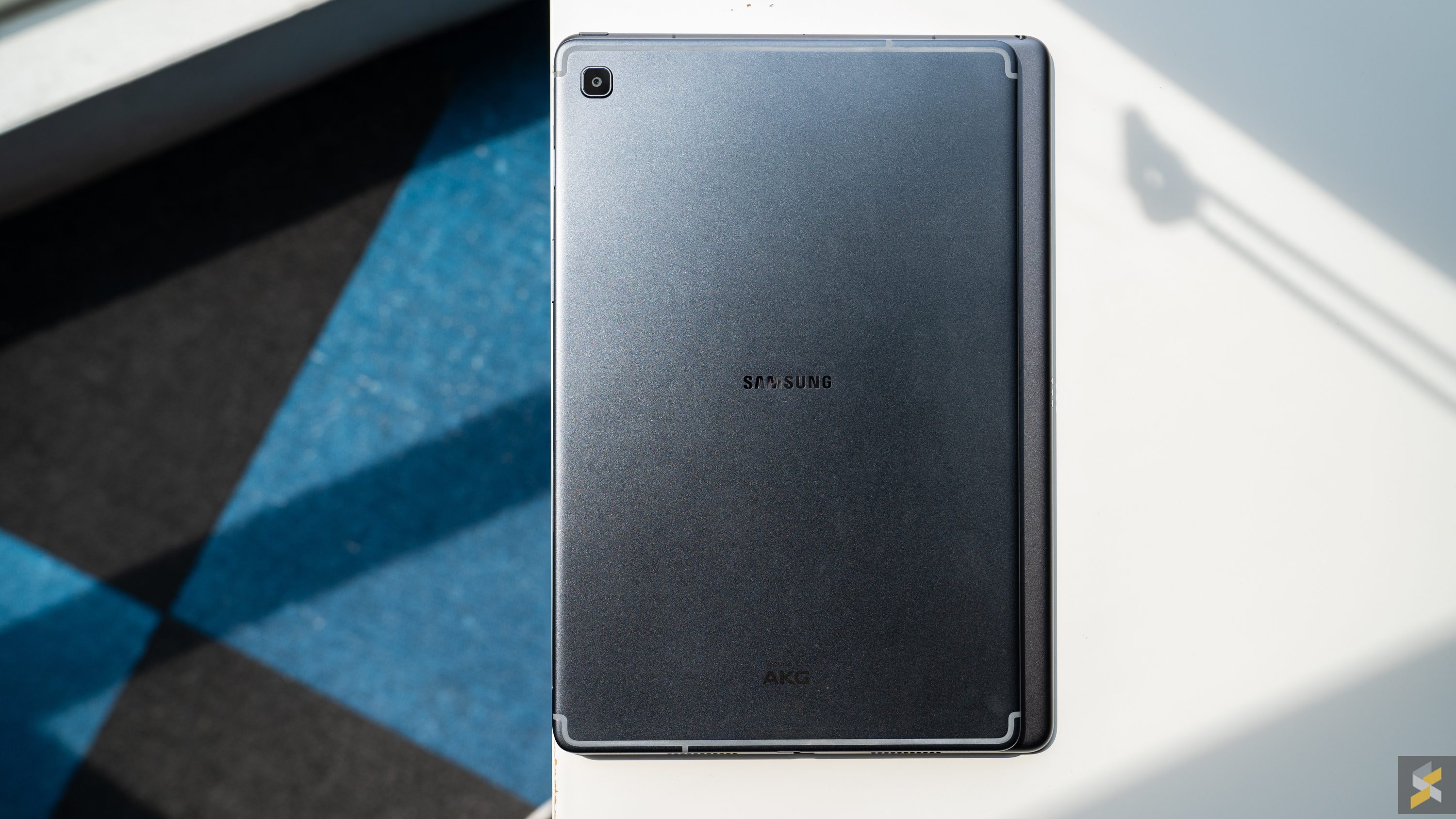
It’s worth noting that the Tab S5e comes with 1GB more RAM than the iPad Air, so in theory it should be able to hold more apps in memory. However, I haven’t really had big issues with multitasking and keeping multiple apps running in the background with the iPad Air. And I keep lots of things running because it has often become my main writing device.
That said, if we look at battery performance, you should be able to expect similar performance figures. Both manufacturers quote a 10-hour battery life on WiFi, and I can confirm that my iPad Air can last an entire work day without needing to hit the socket.
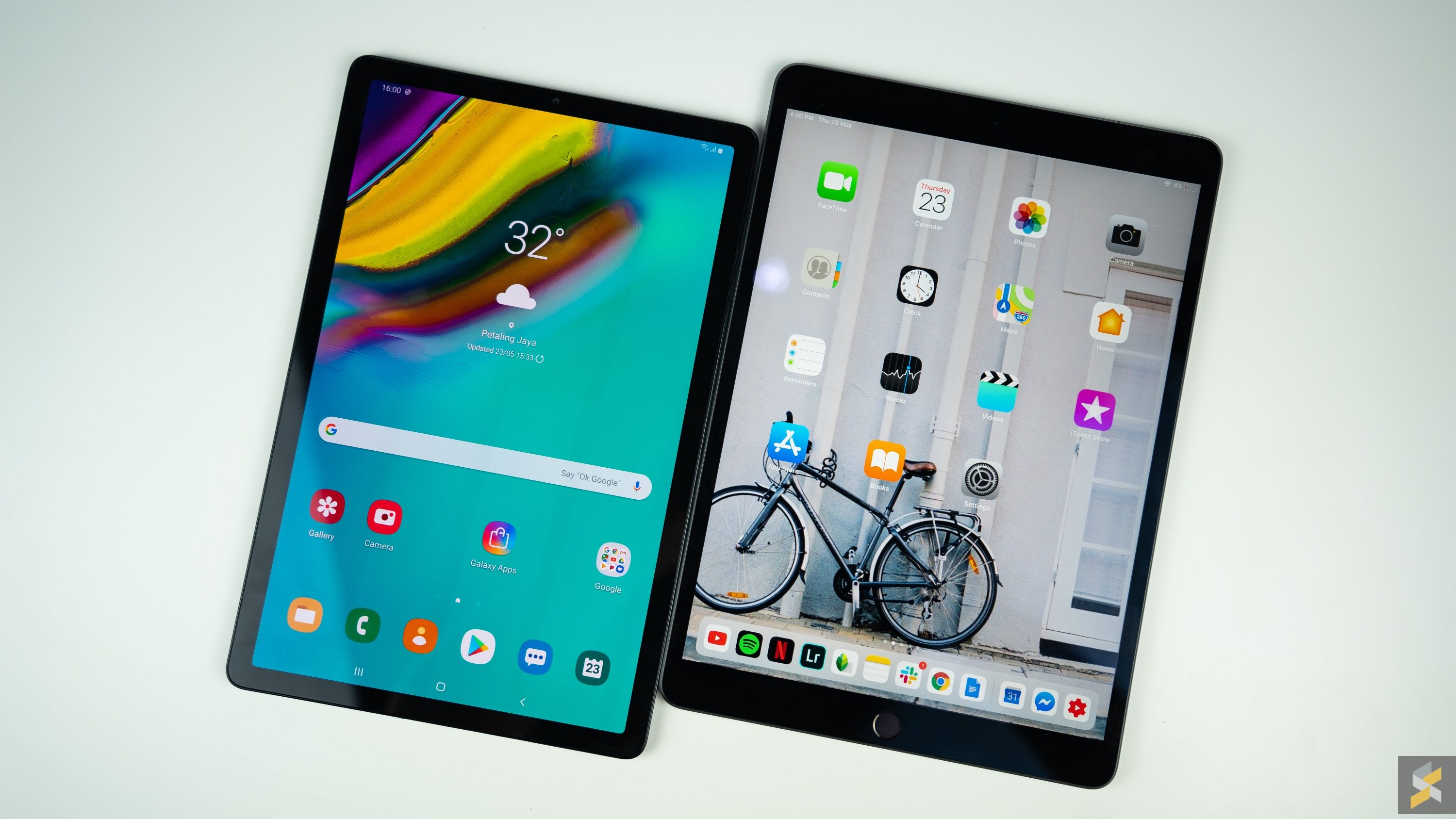
But, at the end of the day, the little things matter too
As it stands now, there’s a pretty nice split between the two tablets: You’ve got the iPad Air that’s great for productivity with a keyboard and iOS’ excellent dock. Then, you’ve got the Galaxy Tab S5e, which has quad speakers, a wider aspect ratio and slimmer forehead and chin that’s much better suited to video consumption. But, as an avid tablet user, I have to say that what ends up sealing the deal for me are the little things.
First, iPad Air 2019 has support for the Apple Pencil, while Samsung Malaysia informs me that the Tab S5e does not support a stylus. Not only is the Apple Pencil my favourite stylus so far, but a stylus is also crucial for productivity and as a navigation tool on a touch interface. And for someone like me, who takes a lot of notes, the Apple Pencil is an invaluable accessory.
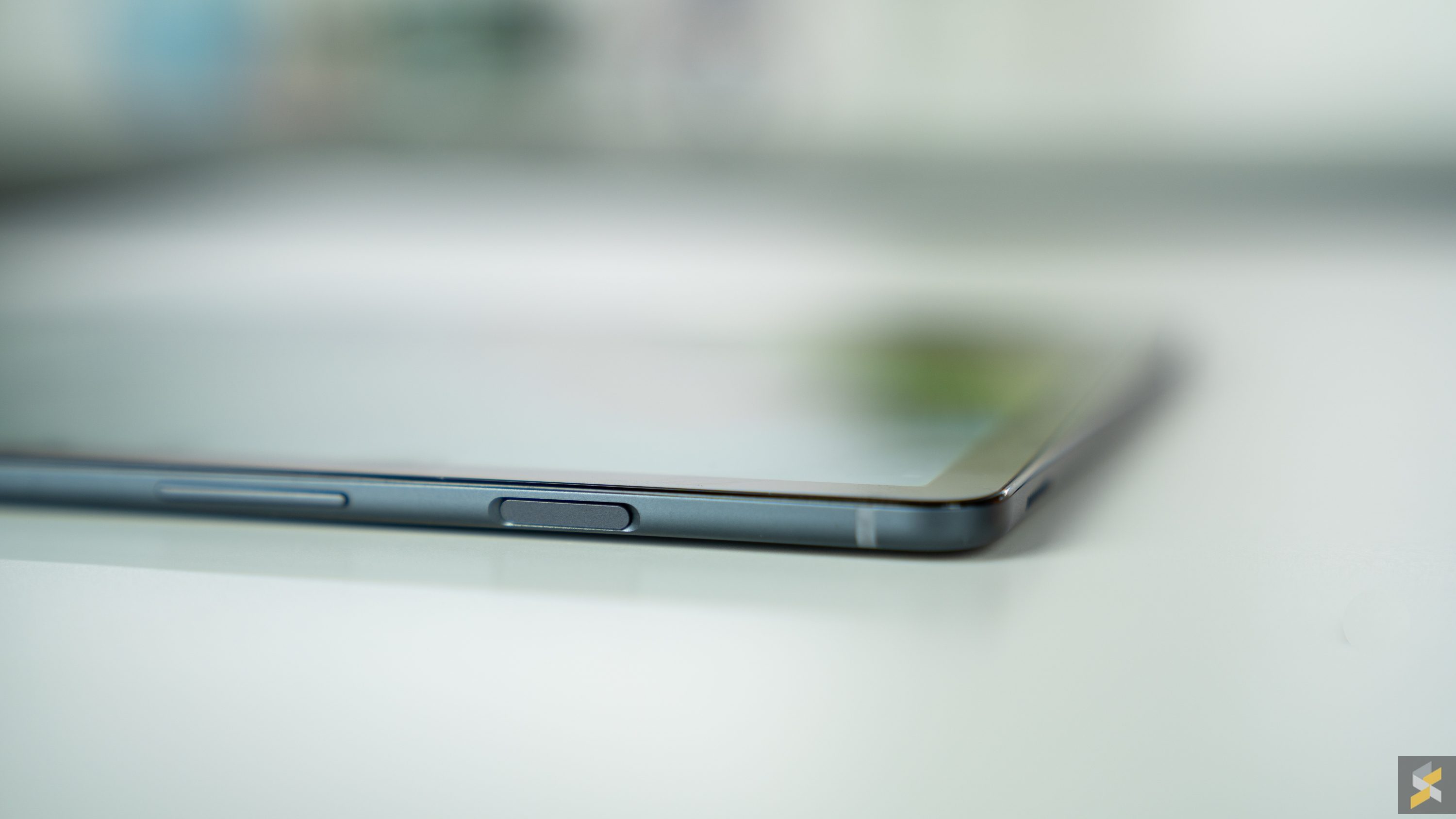
Next, we’ve got the fingerprint scanner placement. On the Tab S5e, it’s on the side, while the iPad Air’s is where Touch ID always has been. Of course, on a smartphone, you can make the argument that you prefer a side-mounted fingerprint scanner–you’d be wrong, but the point is you could. However, I simply have not found a comfortable way to use this fingerprint scanner on a tablet–it’s ridiculous. Touch ID on the iPad Air 2019 though, is excellent. Much faster and more accurate than it was on the basic iPad.
Then, there’s the whole tablet experience. While the Samsung Galaxy Tab S5e is a well-built tablet that can definitely hold its own against the iPad Air, it is let down by its software. And it’s not even Samsung’s fault because they’ve added a lot to try and make the tablet experience more usable. The unfortunate thing is that you can’t run from the fact that Android on the tablet just feels like you’re using a bigger smartphone.
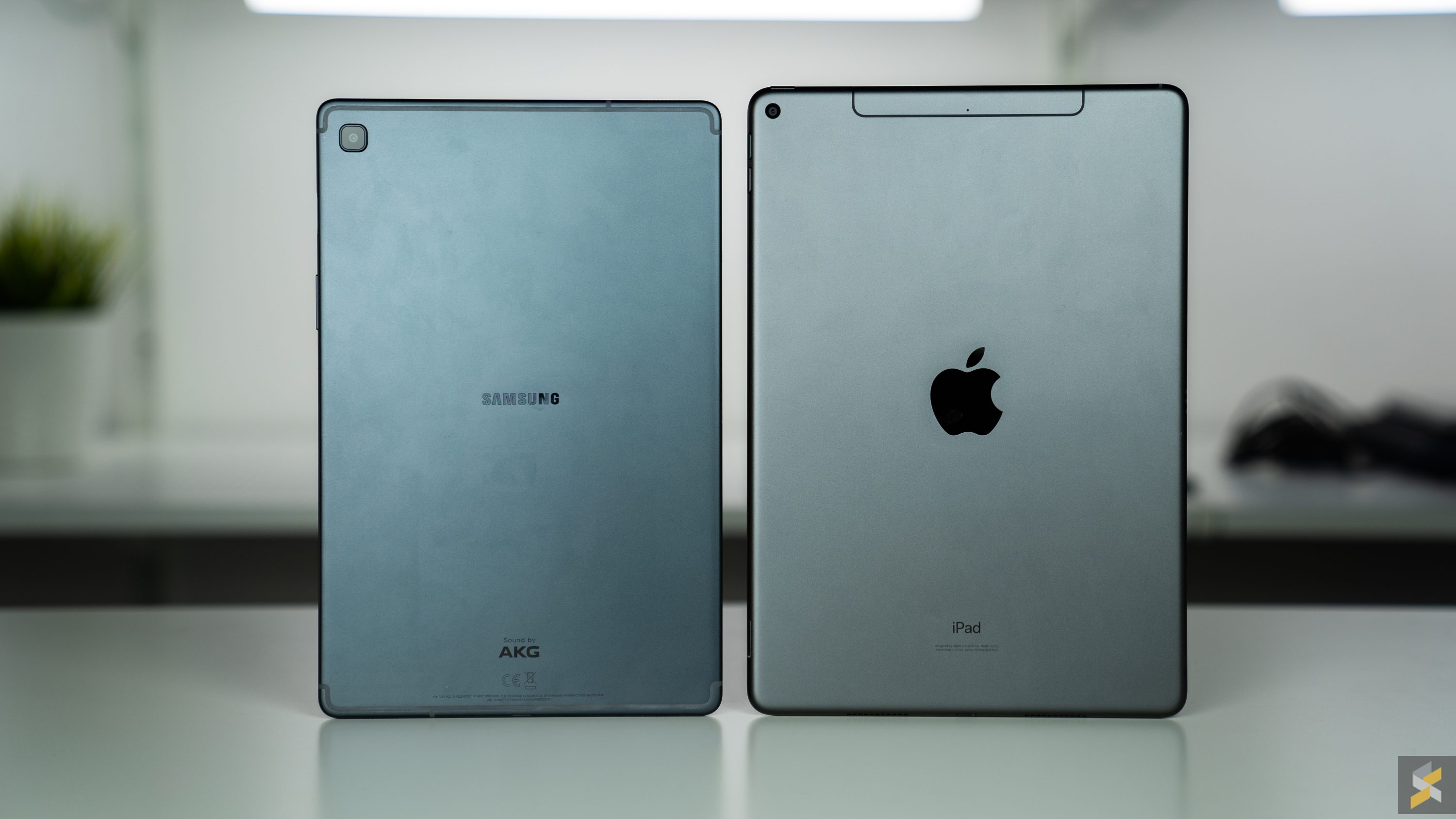
Apple’s iOS on the iPad Air, on the other hand, feels like a completely different experience–it’s amazing how much something like a dock influence usability. Then, we’ve got all the new features in iPadOS to look forward to. Even better multi-window support (can have multiple windows of the same app running), better copy-pasting and a whole lot more.
Then, you balance that with the fact that content consumption on the iPad Air 2019 isn’t atrocious–it’s great, in fact–and you’ve just got such a complete combo. Plus, a similarly spec-ed iPad Air 2019 is only RM2,199, which means it’s RM200 more than the Samsung Galaxy Tab S5e’s RRP of RM1,999. If I had to make an investment in a tablet right now and I had to choose between these two, my money is going to the iPad.
I just wished the accessories were more affordable. RM649 for the Smart Keyboard and RM419 for the Apple Pencil? Ouch.

